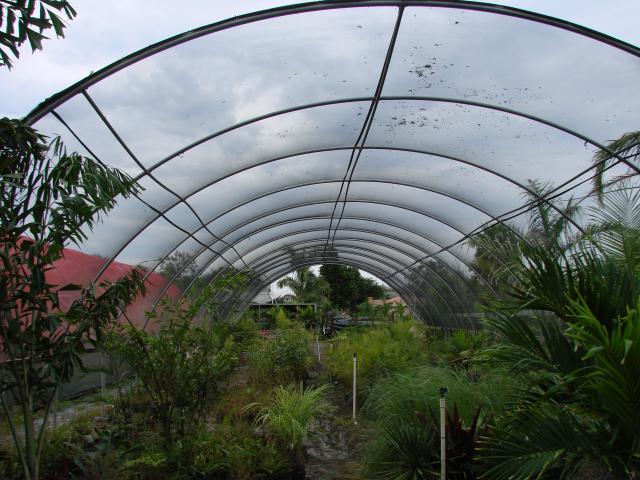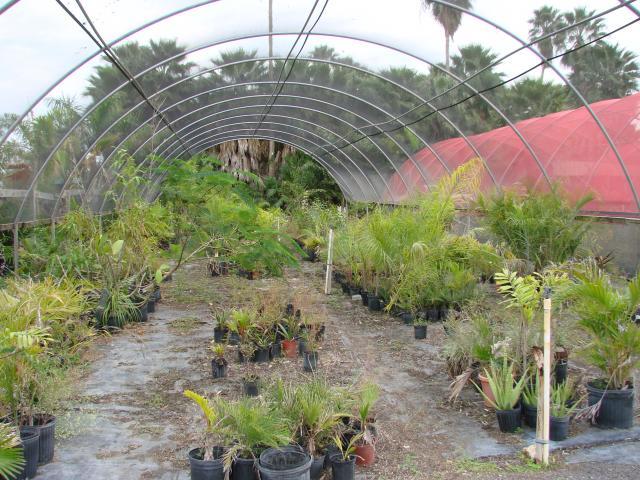I have lost my freaking mind, I am in the nursery business,and I have more shade houses than I need right now, so I have this 30 X 96 shade house that isnt producing anything but weeds, and extra non productive work!!
My big brain fart is to goat fence the sides and ends and build a small varmint proof pen in the middle, split in two parts and grow grass/pasture/grain/ in 2 parts graze on one side, for a week or 2 then switch to other, doing 30 or 40 birds at a time.
The shade house has sprinkler system, and fertigation so growing forage is not a difficult thing to do, plus in deep south Texas we rarely get a freeze, so we have almost year round growing conditions.....
The turn around time on finished broiler would be slower, but the feed cost would be less as well.
The stank should be less as well.
The 30% shade cloth should keep the birds a little cooler during the heat of the year. and prevent hawks from getting them.
can always grow plants in it again should my broiler market go south.
so the part I cant decide is should I go for it or not?
and would it be better to stick with the cXr"s or are the red broilers a better choice for raising on forage?
it also just occured to me I could go alfalfa as a pasture too?? anybody have any experience with that?
1440 sq foot of space should keep30 to 40 broilers busy for a week right? especially if I am still offering feed??


My big brain fart is to goat fence the sides and ends and build a small varmint proof pen in the middle, split in two parts and grow grass/pasture/grain/ in 2 parts graze on one side, for a week or 2 then switch to other, doing 30 or 40 birds at a time.
The shade house has sprinkler system, and fertigation so growing forage is not a difficult thing to do, plus in deep south Texas we rarely get a freeze, so we have almost year round growing conditions.....
The turn around time on finished broiler would be slower, but the feed cost would be less as well.
The stank should be less as well.
The 30% shade cloth should keep the birds a little cooler during the heat of the year. and prevent hawks from getting them.
can always grow plants in it again should my broiler market go south.
so the part I cant decide is should I go for it or not?
and would it be better to stick with the cXr"s or are the red broilers a better choice for raising on forage?
it also just occured to me I could go alfalfa as a pasture too?? anybody have any experience with that?
1440 sq foot of space should keep30 to 40 broilers busy for a week right? especially if I am still offering feed??


Last edited:

